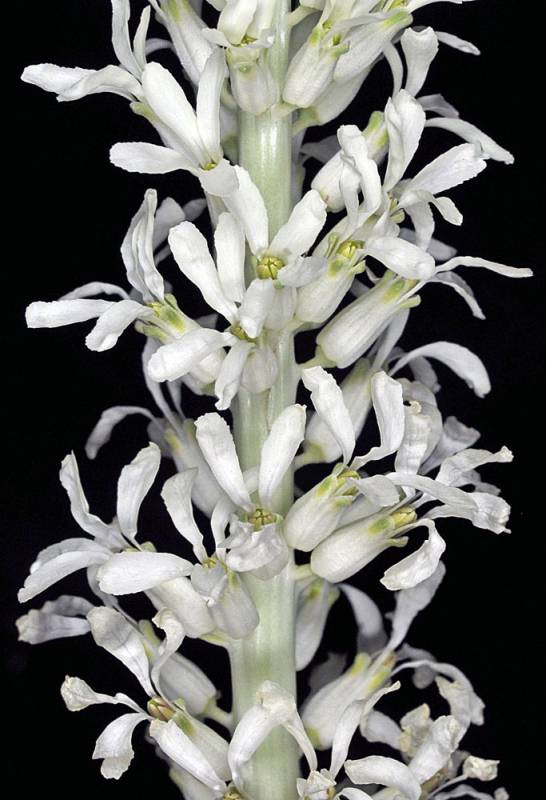Thelypodium brachycarpum
Thelypodium milleflorum
many flowered thelypody
Leaves rather fleshy, the basal ovate to deltoid-lanceolate, 1-4.5 dm. long, long-petiolate, sharply and deeply lobed;
cauline leaves alternate, numerous, reduced upward, pinnatifid to nearly entire.
Inflorescence of bractless, elongate racemes; pedicles stout, 2-5 mm. long, erect-ascending;
sepals 4, erect, 3.5-7 mm. long, white, not saccate at the base;
petal 4, white, 6-20 mm. long, linear to narrowly spatulate;
stamens 6, the filaments flattened, distinct, shorter than the sepals;
style 1-3 mm. long.
Siliques erect, straight to strongly curved, 3-6 cm. long and about 1 mm. thick, on a stipe 1-4 mm. long;
seeds in 1 series.
Thelypodium brachycarpum
Thelypodium milleflorum
Occurring east of the Cascades crest in Washington; southern British Columbia to Nevada, east to Idaho.
- Local floras:
BC,
CA,
OR,
WA
- Local Web sites:
CalFlora,
CalPhotos,
Flora NW,
PNW Herbaria
WildflowerSearch
iNaturalist (observations)
USDA Plants Database
- LBJ Wildflower Center
- SEINet
- Plants of the World Online
- Encyclopedia of Life
- Wikipedia
- Google Image Search


